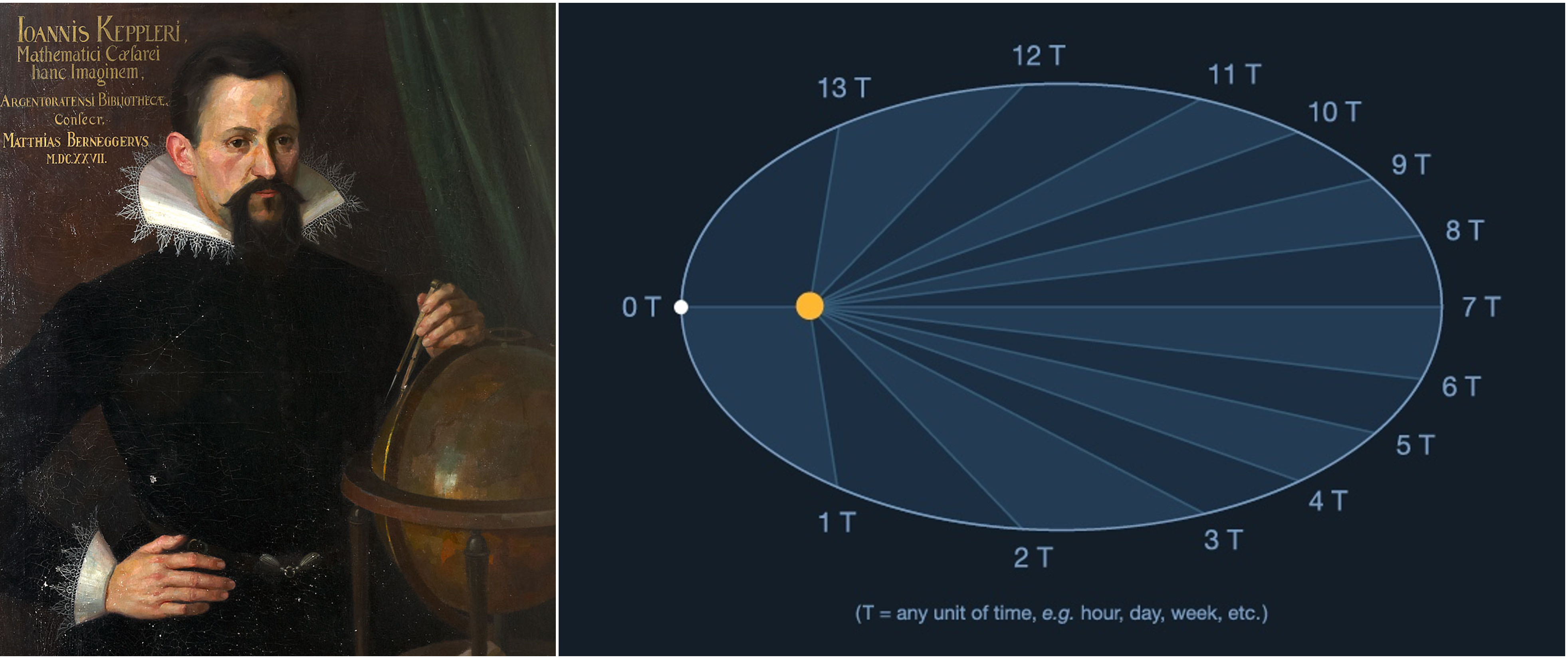
Kepler's three laws: a second astronomical revolution
The person who finally produced a model of planetary motion that was both simple and accurate was not Copernicus but the German mathematician, Johannes Kepler (1571-1630). He formulated the basic mathematical laws of planetary motion which have been retained ever since.
Kepler accomplished this second theoretical revolution by means of the most heroic act of number-crunching in the history of pre-Newtonian astronomy. Using Tycho Brahe’s data as the basis for an enormous quantity of calculations, he eventually discovered a mathematical description of the motion of the planets which was far simpler and fit the observational data far more precisely than the models of Copernicus or Ptolemy. The secret of his success was to break the cardinal rules of ancient astronomical explanation in three crucial respects.
First, he concluded that the orbits of the planets are not circles (with or without epicycles): they are ellipses. Second, he realized that the Sun is not located at the centre of the old circular planetary orbits: it is at one of the two foci of his new elliptical orbits. Third, he finally reaised that the planets to not move at uniform speed either. Neither their linear speed nor their angular speed is constant. Their linear speed varies as the planets speed up and slow down in the course of a single elliptical orbit around the sun; and their angular speed varies as they cover different angles (as measured from the centre of the ellipse or its focus) in equal times.
However, in rejecting these ancient expectations, Kepler replaced the old ideal of uniform, circular motion around a centre with an equally simple and constant mathematical law governing the motion of all the planets: as the planets travel around their elliptical path, moving first farther from and then nearer to the Sun, they cover equal areas of the ellipse in equal times.
Moreover, while Ptolemy and Copernicus needed to fabricate a different system of epicycle, deferent, and (in the former case) equant for each planet, Kepler's three laws applied equally to the Moon and all six planets. For this first time in history, the movement of all the planets had been precisely described by a simple set of mathematical laws. This video from the Museo Galileo shows what this means.
Intuiting a new physics. Having abandoned Aristotle’s metaphysical explanation (that the bodies of the supra-lunar world moved with uniform circular motion because such motion was ‘the most perfect’), Kepler needed a new physical explanation of the motion defined by his three laws. He intuited that the solution was something like magnetism: an attractive force between the sun and the planets whose power varied with distance. This was the essence of the idea of universal gravitation to which Newton gave precise mathematical expression.
It was not Kepler who began giving this new physics a deep empirical grounding and a clear mathematical expression: that work was begun by his close Italian contemporary, Galileo.
Commentary: Howard Hotson (January 2024)
